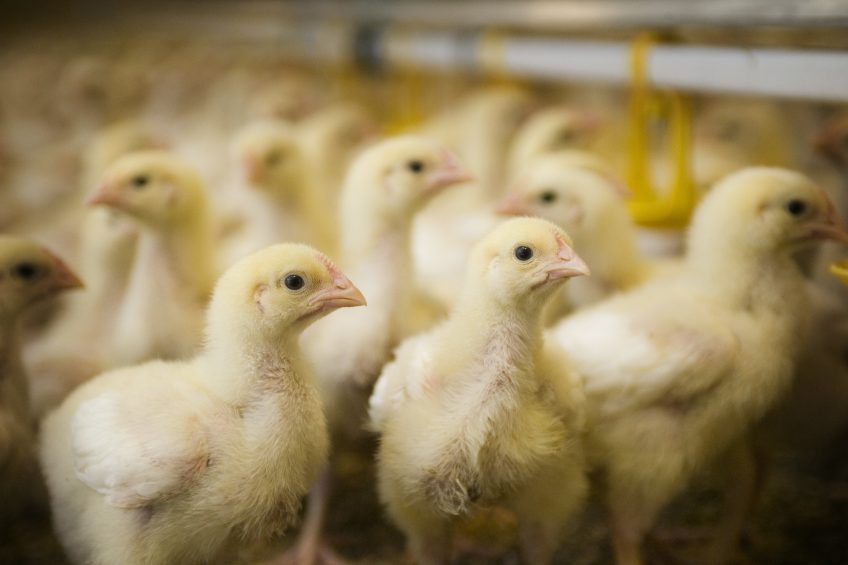UAE poultry sector facing several challenges

A series of factors including Avian Influenza (AI), a food safety scandal in Brazil, and most notably, new halal certification requirements have caused serious challenges for the broiler meat trade in the United Arab Emirates (UAE). As a result, 2017 UAE broiler meat imports are expected to drop significantly from initial estimates.
The UAE’s total broiler meat production is expected to reach 47,000 MT in 2017, a 2% increase from 2016, according to a GAIN report published by the USDA. This increase was driven by the opening of a new poultry facility and expansion in existing farms. Major UAE poultry producers anticipate 2018 production to remain comparable to 2017 volume as no new UAE facilities are scheduled to come online.
Production figures and supply
Local production accounts for approximately 11% of the UAE’s total poultry supply with the majority of products imported from Brazil and the United States. The UAE is not an exporter of broiler meat and consumes the total amount of supply that is available annually. Brazil remains the dominant supplier of broiler meat to UAE with approximately 70% market share.
Although the number of domestic poultry farms has increased over the last 5 years, factors such as high feed costs, animal disease, and strong price competition from imports have limited the expansion of domestic production. Some poultry operations now buy live chickens from small backyard poultry growers to satisfy growing consumer demand. 4 Emirati companies account for 50% of broilers produced in the country, while the largest, Al Rawda, is responsible for over 23% of total domestic production.
Impact of animal disease
In 2017, UAE chicken producers faced challenges related to the control of animal diseases like low pathogenic avian influenza (AI) and infectious bronchitis. Migratory birds and wild animals also contribute to the spread of disease throughout farms in the region. Overall mortality rates are estimated to average around 10% of production, although some farms report losses as high as 25%.
Small-scale backyard poultry production exists in the UAE, although UAE authorities have imposed strict regulations and monitoring of these types of operations ever since bird flu was detected in the country a decade ago. Controlling the spread of animal diseases will continue to challenge UAE chicken producers and constrain output for the foreseeable future.
Lack of Governmental support
The UAE federal government does not provide subsidies or financial support to the UAE poultry industry, so domestic producers face fierce competition from Saudi Arabian and Omani producers who receive governmental support.
Competition from regional suppliers has negatively impacted the profitability of many local producers as several UAE retailers opt to contract fresh poultry supplies from Oman due to lower prices. Although the UAE federal government does not provide subsidies, the Emirate of Abu Dhabi gives domestic poultry producers a direct subsidy equal to approximately 25-30% of the value of select feed purchases.
Production methods
By law, all locally produced chicken must comply with Halal slaughter requirements. Because hand slaughtering is the most common practice in the UAE and stunning is not permitted, many birds are left with broken wings, legs, or other injuries during the process. As a result, the grading quality and value of the birds suffer.
Local industry reports nearly 15% of domestic production is subject to quality downgrades. Further processing of locally produced chicken is limited to chicken franks and chicken parts, particularly breasts and drumsticks. Small quantities of locally produced chicken franks are exported to neighbouring GCC countries.
Production statistics
Major poultry operations in the UAE are generally fully integrated and include on-farm slaughtering facilities. The average rate of weight gain per bird is reported at 0.04 kilograms (kg) per day. Live chickens are generally slaughtered once reaching 1.3kg. The feed conversion rate is reported at approximately 1.5kg of feed per 1kg of chicken meat, although this rate varies depending on farm management practices and animal breed.
Based on major producer estimates, there are 22 poultry farms operating in the UAE. The poultry companies report a modest expansion in production capacity in 2017 with no additional projects scheduled for 2018.












